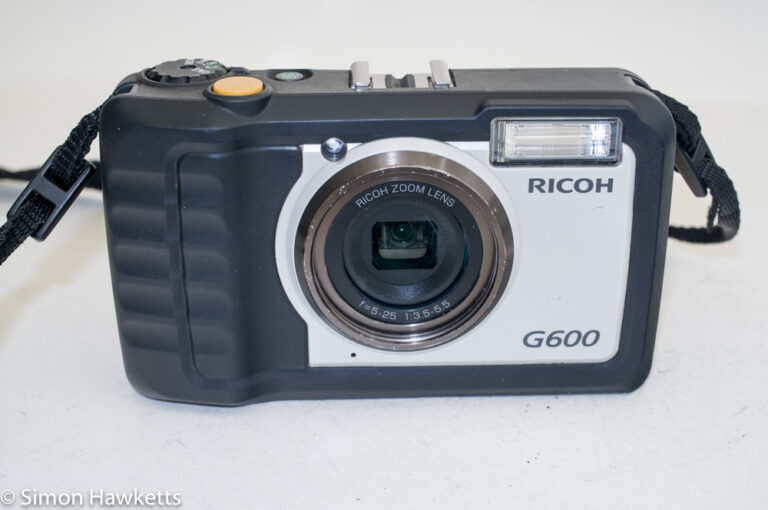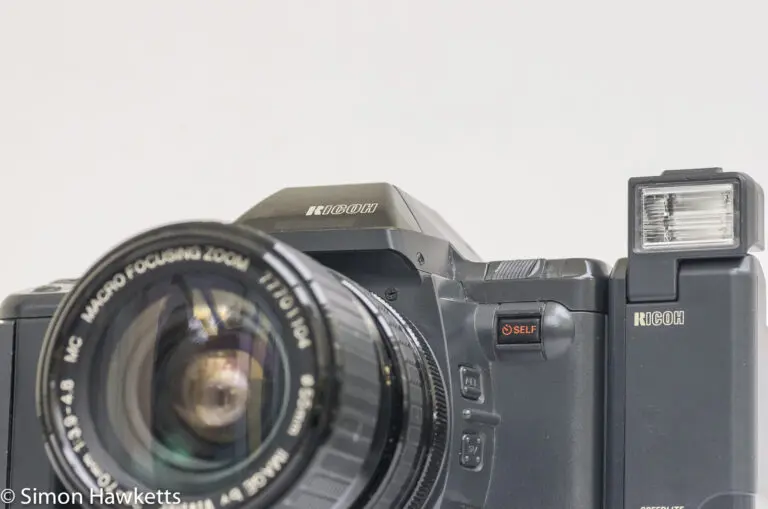The compact & sturdy Ricoh AF-5 point and shoot 35 mm camera
The Ricoh AF-5 is a compact, autofocus, auto exposure, auto wind camera which was made by Ricoh in about 1983. It follows a trend to produce a small camera which could take care of all the technical side of photography and leave the owner to just worry about the picture they want – in other words, a point and shoot camera.
My Ricoh AF-5 camera
I’ve actually owned this camera for a number of years, but haven’t until now added it to my camera blog. The reason for this is not complex – until the last few weeks I’ve not had the space to actually have my camera collection available, the cameras have been boxed up in a number of ‘really useful boxes‘ and packed away until my new Garden room / Hobby room is available, which it now is.
It was when I was going through the boxes and unpacking cameras, that I found the AF-5 again and put a couple of batteries in it to check it over. I remember buying it when I was increasing my Ricoh camera collection and then events took over, and I never got round to properly looking at it.
What I didn’t remember however was that I have two copies of this camera! A little while after I found the first unit, I opened another box and discovered another copy. I have absolutely no recollection as to why I bought the second one – I suspect it may have been included in a bundle or job lot of cameras, and I’d forgotten about it.
Anyway, I’m glad to say that when I inserted the batteries into both units, I found that the two to three years in boxes in the garage (and then I’m ashamed to say, in the shed) hasn’t done any harm and everything seems to be working correctly with both units.
Pictures of the Ricoh AF-5 point and shoot camera

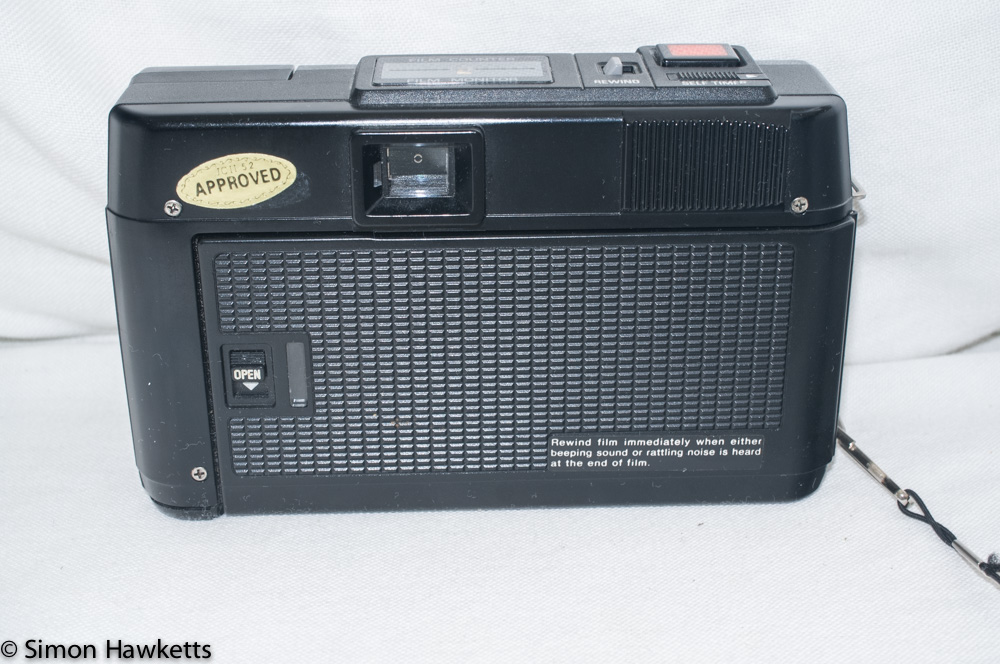
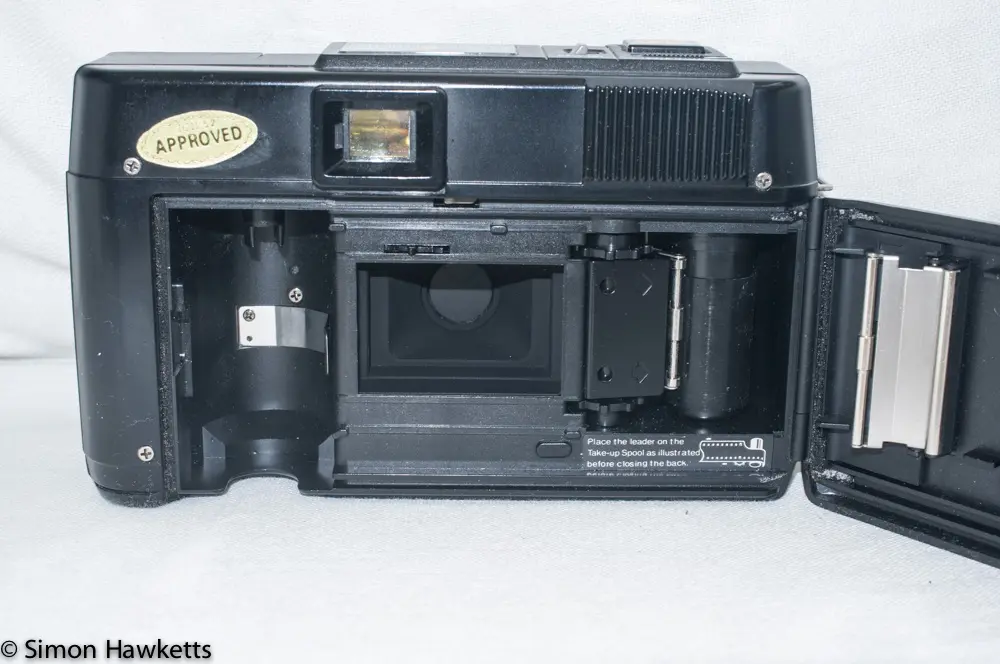
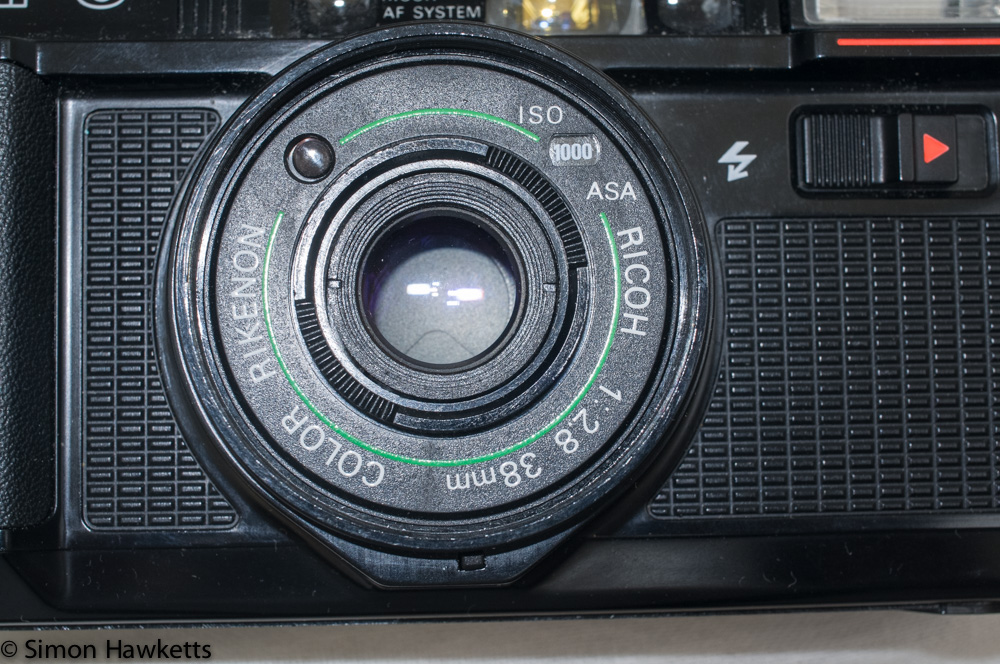

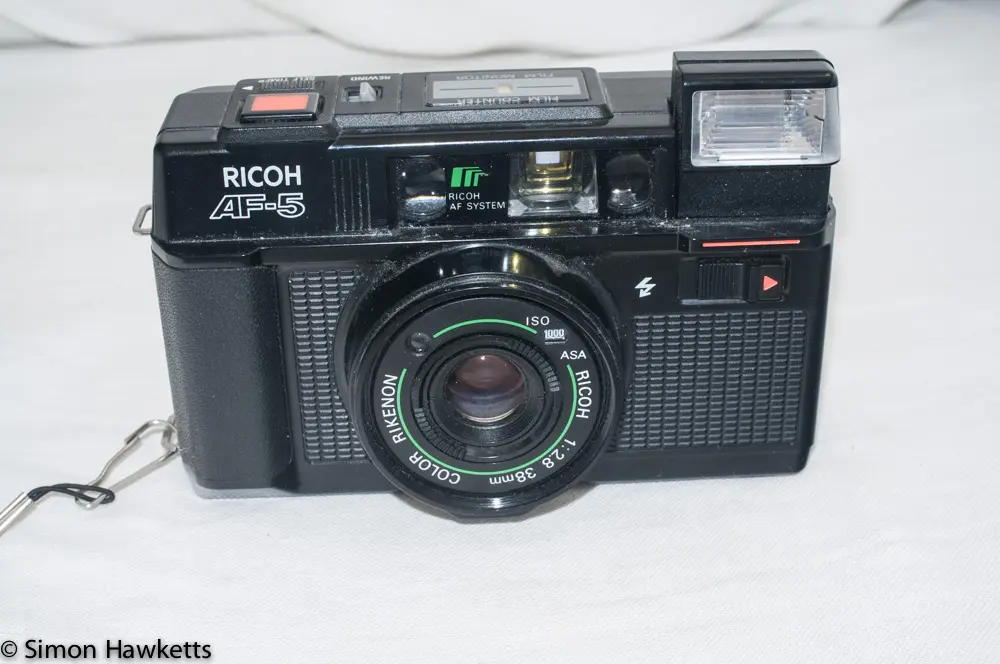
Description of the Ricoh AF-5 point and shoot camera
The Ricoh AF-5 is a small, compact, point and shoot camera which was designed as a ‘carry anywhere’ unit to sit in the car glove compartment, or jacket pocket. It was made to be taken to parties, family days out at the beach or any other social event and to be available whenever a picture taking opportunity presented itself.
Because of the type of camera it is and the usage it was aimed at, it almost doesn’t need to be said that it is very simple to use. Once a film is loaded, it really is a question of looking through the viewfinder and composing the picture, and then pressing the large red shutter button on the top when ready.
Loading a film
To load the camera, the back is opened, and a new film cartridge is placed in the left-hand side with the protruding film laying onto the take-up reel. Then the back is shut, and the shutter release button pressed a couple of times until the frame counter on the top of the camera points to the number 1.

The camera has no mechanism for detecting the film speed (although the system of DX coding film cassettes, so the camera could read it actually started the same year this camera was introduced, 1983), so to get the exposure right, the dial on the front of the camera lens needs to be set to the speed of the film loaded.
The camera has a fairly limited range of ASA 25 to 1000, but I guess that’s to be expected considering the type of camera it is.
Once the film speed is set and the film loaded, the camera is ready to go.
Taking a picture
There are a couple of indicators in the viewfinder that help with the few things that the camera needs human intervention with.
For example, in the top right-hand side of the viewfinder there is a red lightning sign which will illuminate if there is not enough light to take the picture. If this happens, the user needs to pop up the inbuilt flash, by sliding the button on the front panel.
At this point, the other indicator comes into play, which is a red LED on the left side of the viewfinder window, which lights to tell you that the flash is charged and ready to go.
Other than those two indicators, the other useful information showed in the viewfinder is a focus indicator and framing lines.
The focus indicator shows if the camera will be focusing on something close or something further away. It does this by way of a red silhouette of a person if it’s a portrait shot, or a mountain range if it’s a landscape, but this is purely informative – it can’t be changed.
The framing lines are there to show the photographer where the edges of the picture they are taking will appear when the film is developed. It’s easy to assume that everything that appears through the viewfinder will appear in the picture, but that isn’t the case and the lines show the limits, to try to avoid pictures of people with heads cut off etc.
A useful addition to the Ricoh AF-5, considering its primary use as a camera for social events, is the self-timer. This is enabled with a small slider switch under the shutter release which, once it’s turned on, delays the shutter by about 10 seconds and allows the photographer to place the camera somewhere steady and then position themselves in the picture. It gives a count-down beep of 16 long beeps followed by 8 short beeps, so the user is given plenty of warning as to when the shutter is going to fire.
The exposure system is all controlled by the Ricoh AF-5, and is powered, along with the rest of the camera’s functionality, by a couple of readily available AA batteries. In order to compensate for any filters the user might screw over the lens, the light meter cell is positioned inside the filter thread, next to the dial with sets the film speed.
Unloading the film
Once all the images are taken, the camera will power wind the film back into the cassette, but the user needs to instigate it by pressing a small button on the bottom of the camera, marked with an R, and then sliding the rewind switch on the top of the camera between the frame counter and the shutter release. Once the film is back in the cassette, which is judged by listening for the change in tone when the film is not running over the internal sprockets, the switch on the top is disengaged to stop the motor.
Other features
The camera has a small micro switch at the bottom of the lens which will be pressed in when the correct Ricoh lens cover is fitted. Once this happens, it stops the shutter release from operating, which is a nice feature that stops wasted film, and encourages the user to use the lens cover. Only one of my cameras has the correct lens cover – the other has been fitted with a new cover which stops this feature working because it is smaller.
I just want to mention the build quality of the AF-5 as well because, in keeping with Ricoh cameras generally, it is of nice solid construction which feels fairly sturdy in the hand. I think this is a camera that really could be taken anywhere with you and wouldn’t be in much danger of being damaged.
The fact that both my examples have been kept in a plastic box in a garden shed for a few years also probably says a lot for their quality!
Ricoh AF-5 Specifications
- Ricoh AF-5 point and shoot compact camera
- 38 mm f/2.8 Rikenon lens
- Autofocusing
- Auto exposure
- Self-timer with 10 sec delay and count down beep
- Viewfinder with parallax correction
- Zone focus marks in viewfinder
- Takes 46mm filters
- Integrated flash
- Integrated light meter
- Film speed range ASA 25 to 1000
- Autoload, auto wind and power rewind
- Frame counter
- Thumb grip on back of camera
- Tripod bush
- Powered by two AA batteries
- Serial No: 77550593 & 77550776
- Manual available on-line here.
Discover more from Everything Vintage
Subscribe to get the latest posts sent to your email.

